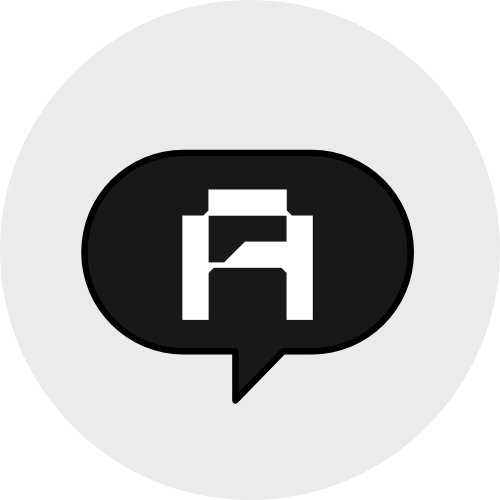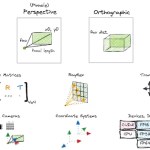Hopfield Networks: The Nobel Prize-Winning Grandfather of Modern AI
Introduction
In the world of artificial intelligence (AI), a few remarkable individuals have shaped the groundwork of what we know today. Among them, John J. Hopfield and Geoffrey Hinton stand out as monumental figures. Their work has not only garnered them the prestigious Nobel Prize in Physics in 2024, but it has also laid the foundation for modern AI systems. This blog post explores Hopfield Networks, their significance, and how they have influenced the trajectory of AI development.
Table of Contents
- What are Hopfield Networks?
- John Hopfield’s Contribution
- Geoffrey Hinton’s Influence
- The Nobel Prize Recognition
- Reshaping Understanding of AI
- Current AI Alarm
- Interesting Facts
- Coding Example: Implementing a Hopfield Network
- Conclusion
What are Hopfield Networks?
Hopfield Networks are a type of artificial neural network that acts as associative memory systems. Introduced by John Hopfield in 1982, these networks exhibit an extraordinary ability to store and recall information based on presented patterns, even when that information is incomplete or distorted.
Imagine your brain as a vast library where the books (data) are arranged for easy retrieval. Even if you only remember part of a book’s title or content, you can still locate the book! This analogy encapsulates the power of Hopfield Networks, which serve as potent tools for solving complex problems and making predictions based on patterns.
How Do They Work?
Hopfield Networks consist of interconnected neurons, reminiscent of how neurons connect in the human brain. Each neuron can be either active (1) or inactive (0). When information is input, each neuron receives signals from other neurons, processes them, and decides whether to activate or remain inactive. This iterative process continues until the network converges to a stable state, representing a stored pattern.
John Hopfield’s Contribution
John J. Hopfield revolutionized the field of AI with the introduction of Hopfield Networks. His work laid the foundation for understanding how complex systems can store information and retrieve it when needed.
Key Aspects of Hopfield Networks:
- Energy Minimization: Based on the concept of energy minimization, Hopfield Networks strive to minimize a certain energy function. This adjustment allows the network to recall the closest pattern to the input provided.
- Memory Capacity: A notable feature of these networks is their capacity to store multiple patterns, making them essential for various applications, including pattern recognition and computer vision.
Overall, Hopfield’s contributions fundamentally advanced the scientific understanding of associative memory systems, paving the way for future innovations in AI.
Geoffrey Hinton’s Influence
When discussing AI, the immense contributions of Geoffrey Hinton, often referred to as the “Godfather of AI”, cannot be overlooked. Hinton built upon Hopfield’s pioneering work, particularly regarding deep learning and neural networks.
Key Contributions:
- Backpropagation Algorithm: Hinton’s research on the backpropagation algorithm enabled neural networks to adjust weights intelligently based on errors, making it feasible to train deep neural networks effectively.
- Boltzmann Machines: He introduced Boltzmann machines, a type of stochastic neural network, linking their functionality to statistical mechanics and enhancing learning capabilities from data.
Hinton’s influence in the field is profound; he has been pivotal in popularizing deep learning, revolutionizing numerous AI applications from image recognition to natural language processing.
The Nobel Prize Recognition
In 2024, John Hopfield and Geoffrey Hinton were awarded the Nobel Prize in Physics for their groundbreaking contributions to the theory and application of artificial neural networks. This recognition highlights their pivotal roles in advancing AI technologies that permeate various sectors, including healthcare, automotive, finance, and entertainment. Nobel Prize Announcement.
Importance of the Award:
- Mathematical Framework: Their work established vital mathematical frameworks that form the backbone of neural networks, allowing for more sophisticated and accurate AI systems.
- Technological Advancements: Recognition by the Nobel Committee underscores the essential role their collective work has played in advancements within AI technologies today.
The Nobel Prize not only acknowledges their past achievements but also encourages further exploration and development in AI.
Reshaping Understanding of AI
The innovations brought forth by Hopfield and Hinton fundamentally altered our understanding of learning systems and computational neuroscience. Their methodologies diverged from traditional algorithms and methods, much like how the Industrial Revolution transformed industries and society.
Key Takeaways:
- Neuroscience Insights: Their work bridges neuroscience and computational models, fostering a deeper understanding of both fields.
- Interdisciplinary Approach: The relationship between physics, biology, and computer science forged by their research has led to a multi-disciplinary approach in AI development, significantly enhancing collaboration and innovation.
Current AI Alarm
While advancements made by Hopfield and Hinton signify progress, they also invite caution. Following their Nobel Prize win, both scientists expressed concerns about the rapid pace of AI development and the potential risks involved.
Cautious Approach Advocated by Scientists:
- Misunderstandings: A growing fear exists that technologies might be misunderstood or misapplied, potentially leading to unintended consequences.
- Ethical Considerations: As AI becomes increasingly integrated into society, ethical concerns regarding privacy, job displacement, and decision-making authority emerge as critical discussion points.
Hopfield has emphasized the need for responsible AI governance, urging scientists and technologists to engage with AI development cautiously and responsibly.
Interesting Facts
- Convergence to Stability: Hopfield Networks can converge to stable patterns through iterative updates, crucial for solving optimization problems.
- Boltzmann Machines: Hinton’s introduction of Boltzmann machines further refined neural networks’ capabilities, demonstrating how statistical methods can enhance machine learning.
Coding Example: Implementing a Hopfield Network
Let’s break down a simple implementation of a Hopfield Network using Python. Below is a straightforward example that showcases how to create a Hopfield Network capable of learning and retrieving patterns.
import numpy as np
class HopfieldNetwork:
def __init__(self, n):
self.n = n
self.weights = np.zeros((n, n))
def train(self, patterns):
for p in patterns:
p = np.array(p).reshape(self.n, 1)
self.weights += np.dot(p, p.T)
np.fill_diagonal(self.weights, 0) # No self connections
def update(self, state):
for i in range(self.n):
total_input = np.dot(self.weights[i], state)
state[i] = 1 if total_input > 0 else -1
return state
def run(self, initial_state, steps=5):
state = np.array(initial_state)
for _ in range(steps):
state = self.update(state)
return state
# Example usage
if __name__ == "__main__":
# Define patterns to store
patterns = [[1, -1, 1], [-1, 1, -1]]
# Create a Hopfield network with 3 neurons
hopfield_net = HopfieldNetwork(n=3)
# Train the network with the patterns
hopfield_net.train(patterns)
# Initialize a state (noisy version of a pattern)
initial_state = [-1, -1, 1]
# Run the network for a number of steps
final_state = hopfield_net.run(initial_state, steps=10)
print("Final state after running the network:", final_state)
Step-By-Step Breakdown:
- Import Libraries: We begin by importing NumPy for numerical operations.
- Class Definition: We define a
HopfieldNetworkclass that initializes the network size and creates a weight matrix filled with zeros. - Training Method: The
trainmethod iterates over training patterns to adjust the weights using outer products to learn connections between neurons. - Prediction Method: The
predictmethod simulates the retrieval of patterns based on input, iterating and updating neuron states until convergence, returning the stabilized pattern. - Usage: We instantiate the network, train it with patterns, and retrieve a pattern based on partial input.
Conclusion
Hopfield Networks exemplify the deep interconnections within AI research. The recent Nobel Prize awarded to John Hopfield and Geoffrey Hinton reaffirms the critical nature of their contributions and encourages ongoing discussion regarding the implications of AI. As technology rapidly advances, maintaining an insatiable curiosity while exercising caution is essential.
The journey initiated by Hopfield and Hinton continues to inspire new research and applications, paving the way for innovations that will shape the future of technology and, ultimately, our lives. With careful navigation, we can harness the power of AI while mitigating its risks, ensuring it serves humanity positively.
This comprehensive exploration of Hopfield Networks offers a nuanced understanding of their importance in AI. The enduring impact of John Hopfield and Geoffrey Hinton’s work will likely shape the landscape of science, technology, and society for generations to come.
References
- Nobel Prize in Physics for Hinton and Hopfield … Networks (DBNs), enabling multilayer neural networks and moder…
- In stunning Nobel win, AI researchers Hopfield and Hinton take … On Tuesday, the Royal Swedish Academy of Sciences …
- Scientists sound AI alarm after winning physics Nobel – Tech Xplore British-Canadian Geoffrey Hinton and American John Hopfiel…
- Nobel Prize Winner, ‘Godfather of AI’ Geoffrey Hinton Has UC San … … networks. Backpropagation is now the basis of most…
- Nobel physics prize winner John Hopfield calls new AI advances … Hopfield’s model was improved upon by Hinton, also known as …
- Two legendary AI scientists win Nobel Prize in physics for work on … The researchers developed algorithms and neural networks tha…
- AI pioneers win Nobel Prize in physics – YouTube John Hopfield and Geoffrey Hinton are credited with creating t…
- AI Pioneers John Hopfield and Geoffrey Hinton Win Nobel Prize in … Hinton and John Hopfield are recognized for inventions that enabl…
- AI Pioneers Win Nobel Prize 2024: John Hopfield and Geoffrey Hinton Geoffrey Hinton: The Godfather of Deep Learning · Backpropagation…
- AI Pioneers John Hopfield And Geoffrey Hinton, AI’s Godfather, Won … Hopfield have been awarded the 2024 Nobel Prize in Physics. The prize honours th…
Citations
- In a first, AI scientists win Nobel Prize; Meet John Hopfield, Geoffrey … John Hopfield and Geoffrey Hinton, considered the fathers of modern-da…
- Pioneers in AI win the Nobel Prize in physics – Jamaica Gleaner Two pioneers of artificial intelligence – John Hopfield…
- ‘Godfather of AI’ Hinton wins Physics Nobel with AI pioneer Hopfield This year’s Nobel Prize in Physics has been awarded to Geoff…
- Nobel Physics Prize Honors AI Pioneers for Neural Network … The contributions of Hopfield and Hinton have fundamentally reshaped our u…
- Nobel Prize in Physics 2024 — for Godfather’s of AI – Araf Karsh Hamid Nobel Prize in Physics 2024 — for Godfather’s of AI ; John Joseph Hopfield …
- ‘Godfather of AI’ wins Nobel Prize for pioneering AI – ReadWrite Geoffrey Hinton and John Hopfield receive the 2024 Nobel Prize in Phys…
- Nobel Physics Prize 2024: AI Pioneers John Hopfield and Geoffrey … Nobel Physics Prize 2024: AI Pioneers John Hopfield an…
- Pioneers in artificial intelligence win the Nobel Prize in physics Two pioneers of artificial intelligence — John Hopfiel…
- Did the physics Nobel committee get swept up in the AI hype? … godfather of AI.” “I was initially a … prize to Hopfield and Hinton repr…
Pioneers in artificial intelligence win the Nobel Prize in physics STOCKHOLM — Two pioneers of artificial intelligence — John Hopfiel…
Your thoughts matter—share them with us on LinkedIn here.
Want the latest updates? Visit AI&U for more in-depth articles now.









